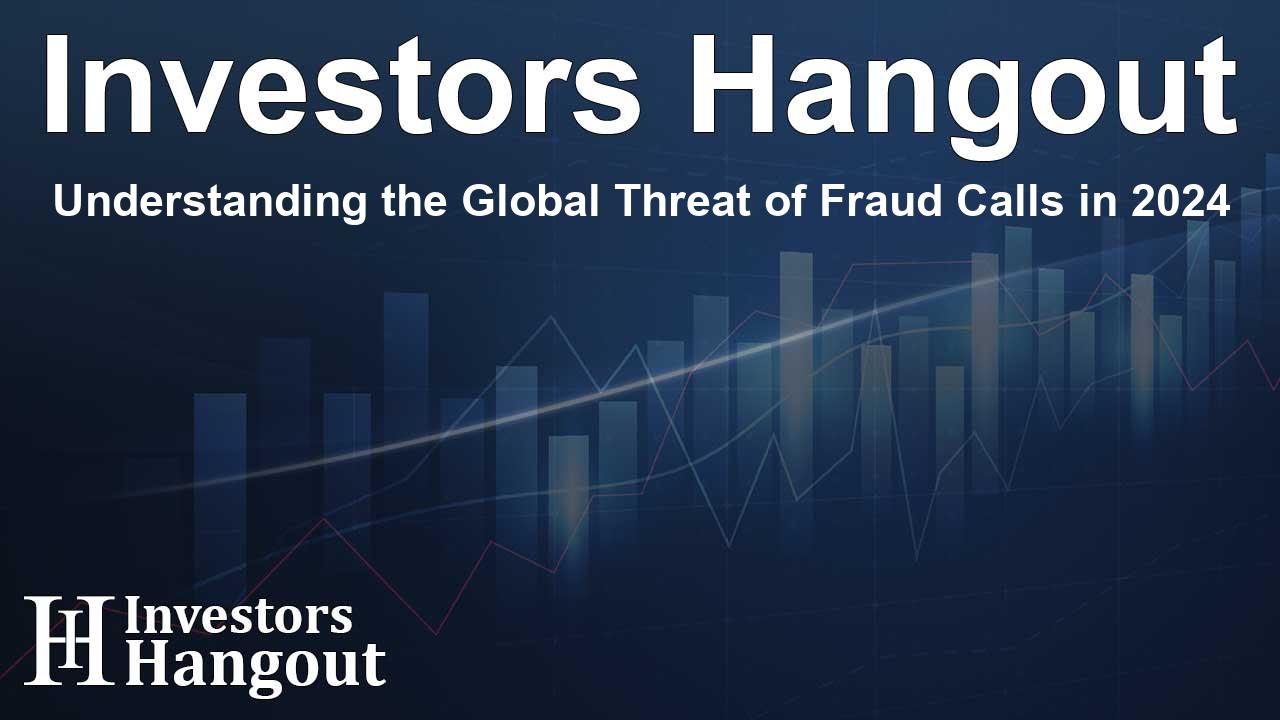Understanding the Global Threat of Fraud Calls in 2024

The Rising Threat of Fraud Calls Worldwide
In an age where technology connects us deeper than ever, there exists a dark side to communication that has become increasingly prevalent: fraud calls. According to the latest findings from Hiya, a leading voice intelligence platform, over 9.7 billion calls were flagged as suspected spam during the last quarter. This staggering number translates to more than 105 million spam calls identified daily, showcasing the severity of the issue on a global scale.
Understanding the Call Threat Landscape
Hiya’s Q3 2024 Global Call Threat Report details extensive insights into the nature of spam calls, categorizing them into different types based on the tactics used by fraudsters. Among the myriad of threats, fraudsters impersonating banks and credit card firms emerged as the most significant global risk. Everywhere you turn, individuals are receiving these deceitful calls aimed at coaxing sensitive information, including bank account details and passwords, right out of unwitting victims.
The Tactics of Impersonation
The deception doesn’t stop at financial institutions. Amazon impersonation has been highlighted as the second most common fraudulent approach. Scammers often instigate fear, leading victims to believe there’s an issue with their Amazon-linked cards or pressuring them to share personal details to verify fictitious orders. This blend of intimidation and misinformation is proving to be alarmingly effective.
Spam Calls by Region: A Closer Look
Interestingly, the frequency and nature of spam calls vary distinctly from one country to another. For example, Brazil has the highest volume, with an astonishing average of 28 spam calls per month per person, of which 14% are identified as fraudulent. On the contrary, citizens in Germany experience a much more manageable average of only 2 spam calls monthly. Meanwhile, Spain leads in Europe with 13 monthly spam calls, most of which are fraudulent in nature.
The Situation in the United States
Focusing on the United States, residents have seen an uptick in spam calls, rising from an average of 11 to 13 calls per month in the recent quarter. Predominant among these are Medicare scams, a surge likely exacerbated by the recent open enrollment period. Unlike typical fraud calls that seek financial information, these scams prioritize personal data, such as Medicare numbers, which can facilitate false billing with the government.
The UK's Ongoing Struggle with Scam Calls
Across the pond in the United Kingdom, HMRC scams have remained the most common threat. Fraudsters cunningly seek personal and financial information by threatening unpaid taxes. Following closely are scams impersonating Amazon representatives and credit card companies, predominantly targeting Visa and Mastercard customers. Disturbingly, delivery scams have also proliferated, generating concern as fraudsters impersonate trusted courier services like Royal Mail and UPS.
Insights from Hiya's President
Kush Parikh, President of Hiya, states, "The continuous rise of fraud call rates is a pressing concern. Even as public awareness grows about these threats, fraudsters are presumably getting more sophisticated, adapting their tactics using the latest technology. Our data suggests that the trend of robocalls is alarmingly prevalent, highlighting the ease and speed with which scammers can target large numbers of people at once."
The Importance of Prevention and Awareness
While there have been some positive strides in reducing spam call volumes in certain markets, Parikh emphasizes that significant efforts are still required from various sectors. In the UK, for instance, telecom operators are deploying technology aimed at minimizing the occurrence of unwanted calls, thereby protecting consumers. However, financial institutions, government departments like HMRC, and major brands like Amazon and Google must also step up to educate their customers about identifying legitimate communications, significantly aiding in the prevention of these scams.
For those interested in understanding more about the landscape of call threats, Hiya provides comprehensive insights through their Q3 2024 Global Call Threat Report.
Frequently Asked Questions
What are the main findings in Hiya's report?
Hiya's report indicates a significantly high number of spam and fraudulent calls globally, with major threats coming from impersonations of banks and Amazon.
How prevalent are spam calls in different countries?
Brazil experiences the highest rate of spam calls, averaging 28 per month, while countries like Germany see much lower rates.
What tactics are used by fraudsters?
Scammers commonly impersonate banks and credit card companies to extract sensitive financial information from individuals.
What types of scams are common in the U.S.?
Medicare scams and impersonation calls pretending to be from the IRS and insurance companies are amongst the most prevalent in the U.S.
What can companies do to protect consumers?
Education on recognizing legitimate calls and implementing protective technologies are key steps that companies can take to help protect consumers from fraud.
About The Author
Contact Addison Perry privately here. Or send an email with ATTN: Addison Perry as the subject to contact@investorshangout.com.
About Investors Hangout
Investors Hangout is a leading online stock forum for financial discussion and learning, offering a wide range of free tools and resources. It draws in traders of all levels, who exchange market knowledge, investigate trading tactics, and keep an eye on industry developments in real time. Featuring financial articles, stock message boards, quotes, charts, company profiles, and live news updates. Through cooperative learning and a wealth of informational resources, it helps users from novices creating their first portfolios to experts honing their techniques. Join Investors Hangout today: https://investorshangout.com/
The content of this article is based on factual, publicly available information and does not represent legal, financial, or investment advice. Investors Hangout does not offer financial advice, and the author is not a licensed financial advisor. Consult a qualified advisor before making any financial or investment decisions based on this article. This article should not be considered advice to purchase, sell, or hold any securities or other investments. If any of the material provided here is inaccurate, please contact us for corrections.
